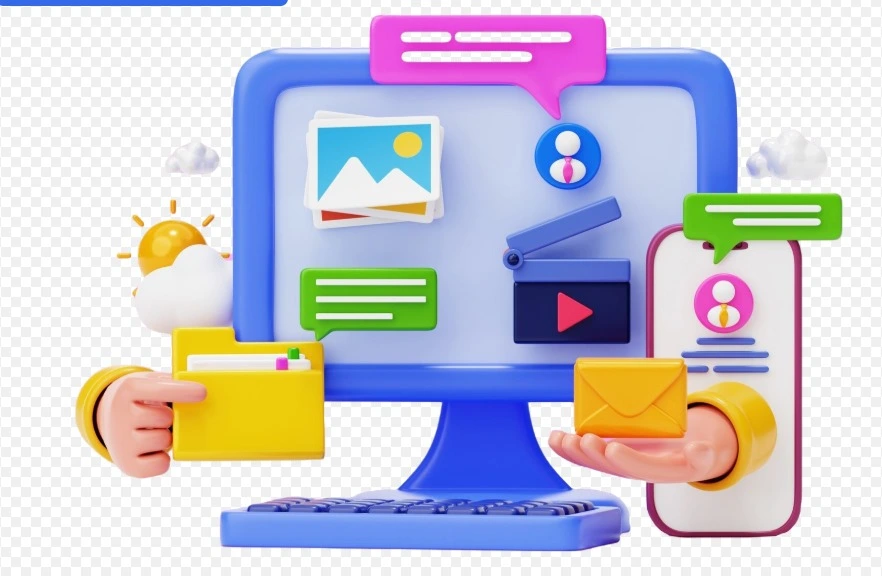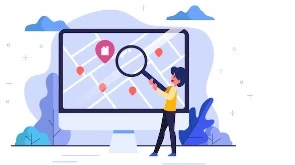Content Creation (Introduction)

Content Creation is the most vital component for any digital marketing agency. Content is king, and providing quality content to your users will help you differentiate from competitors, drive traffic, etc. This content will provide actionable tips to enhance your content creation process.
Knowing Your Audience
The first and foremost step is to know your audience before writing any content. For whom you are writing and how will affect them. Knowing about their problems and pain points will give you better guidance to tailor your content according to the needs of your users. Making your content according to users needs can increase your website engagement and increase the chances of conversion.
After you have defined the interest of your audience you must develop an engaging content creation strategy
Developing an Effective Content Strategy

- Set Defined Goals: What is the intent of writing the content, what do you want to achieve? What type of keyword do you use to navigate your user? What is your purpose?
- Keyword Research: Identifying the relevant keywords and terms that best connect with your audience. This can be done through some of the tools like Google Keyword Planner and Semrush to identify the best keywords. Also, you must know what is your intent for using that keyword.
Now keyword intent can be of 4 types
- Informational keywords: When your user is looking to learn something
- Navigational keywords: The user is searching for a specific page, company, or physical location.
- Commercial keywords: The user is looking to research before making a purchase decision.
- Transactional keywords: The user is looking to research before making a purchase decision.
- Planning your content: planning your content creation means organizing your topics, and publishing dates as consistency is another factor to keep in mind while posting content.
For a personalised strategy: Click here
Crafting Engaging Content

- Storytelling: People relate to stories. Use storytelling methods to make your content meaningful and memorable. Use case studies, personal experiences, or anecdotes that will resonate with the audience.
- Call to Action (CTA): Always include a clear CTA in your content. Whether it’s subscribing to a newsletter or requesting a consultation, a well-placed CTA can drive conversions.
- Use of visual elements: Use of images and videos to make your content more appealing and engaging. Visuals make the information more easy to understand and improve user experience.
Things to remember while doing content creation:
- While writing the content you must think like a customer as if you have faced the same problem.
- Must answer some of the common questions(FAQs) that users can face.
- You must address the pain points that a user has.
- You can add emotion to your content that your users can relate with.
Optimizing Content for SEO

Optimizing search engine optimization is critical to ensure your content reaches a broader audience. Here are some SEO tips for content creation:
- Keyword Density: Integrate keywords naturally into your content. Your content should have a keyword density range between 1 to 2. Use variations of your primary keyword throughout the text. For eg: if your content is 1500 words long an ideal density should be between 1.3 to 1.5.
- Meta Descriptions: Write great meta descriptions that summarize your content. These descriptions appear in search results and can impact click-through rates. Keep the description short and impactful.
- Internal Linking: Internal linking to other relevant content on your website will not only improve your SEO but will act as an incentive for readers to click and explore other content.
- Mobile Optimization: Ensure the content you are creating is mobile-friendly. A lot of today’s traffic comes from mobile devices. Therefore you want to make sure the content you create is easily accessible on any screen.
- Content Plagirism: The content you post must be original and should not copied.
- Orphan Content: There should not be any content in your content that does not include your focused keyword.
- Image Alt Text: The images used in your content must contain alternative text and out of all the images in the content 2-4 images must contain your focused keyword as alternative text.
- Chunk Your Content: The content should be properly chunked i.e must be in parts and should not be in a long paragraph which help the user to better understand the content.
Promoting Your Content

Creating great content is only half the battle; promoting it is equally important. Here are some effective strategies for content promotion:
- Social Media: Share your content through social media. Customize your message for each of these sites to gain the highest engagement.
- Email Marketing: Use email newsletters to share your content with subscribers. This helps keep your audience informed and engaged with your brand.
- Backlinks: Write posts for reputable websites in your industry. This not only helps you gain exposure but also builds backlinks to your website, enhancing your SEO efforts.
Measuring Success
To assess the effectiveness of your content creation efforts, it’s essential to track and analyze performance metrics. Here are some of the KPIs that can be highlighted:
- Traffic Analytics: Tools like Google Analytics can be applied to track website traffic, page views, bounce rate, session duration, and other metrics for the evaluation of content.
- Engagement rates: Track the engagements made on your social media channels and comments on the posts you published on your blog. High engagement proves that your content is hitting well with your audience.
- Conversion Rates: Monitoring and tracking conversion rates are observing how effectively your content generates the desired conversions. Determining the number of viewers who take the action based on the conversion you required, such as subscribing to a newsletter or purchasing a product.
Continual Improvement
Content creation is not one-time work; it’s a continuous process. Evaluate and update your content strategy from time to time depending on the performance metrics and audience feedback. Keep track of industry trends and change the course accordingly. You may try different formats and topics to understand which one would suit you best.
Before Concluding some key points to remember that a user expects:
- The user prefers quality over quantity, they want to seek solutions to their problems.
- User satisfaction is a great concern, you must feel that something valuable is gained.
- The content should be properly formatted so that it is easy to understand.
Some of the common mistakes we make while creating content:
We think our users will accept everything we will give but that’s not true because our user is not a fool Users will only entertain the content if the user gets anything valuable or its problem is being solved.
We think that the Google algorithm is nothing it will show our content to our users even if it is not useful.
Writing content without any emotion is also a big mistake, making content without relating to the audience and expecting it will be liked by our users.
Conclusion
Content creation is a dynamic and essential part of any digital marketing strategy. By understanding your audience, developing a robust content strategy, optimizing for SEO, and promoting effectively, your digital marketing agency can create impactful content that drives engagement and conversions. Remember to continually assess and improve your content strategy to stay ahead in a competitive digital landscape. With these tips and tricks, you can ensure that your agency remains a trusted authority in your niche.
You must have a look at this also: Social Media Marketing
want to learn with one-to-one mentorship: Click Here



